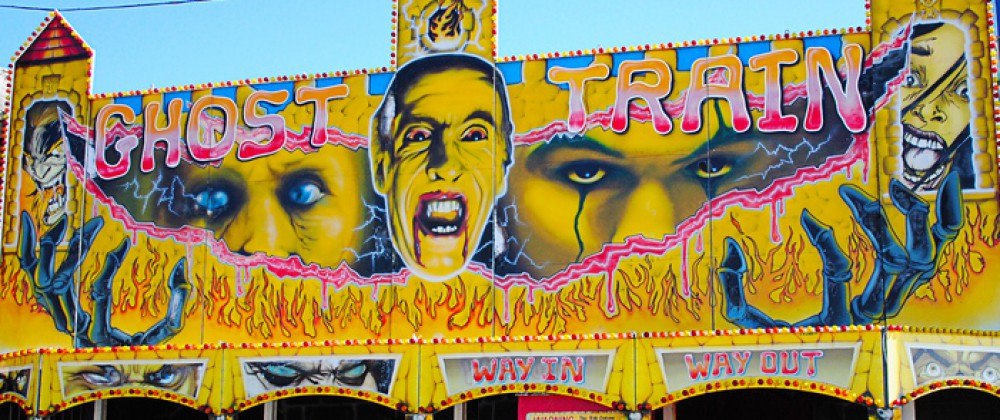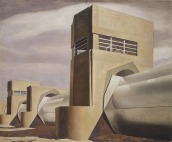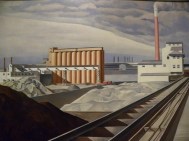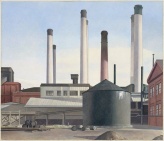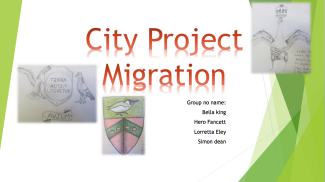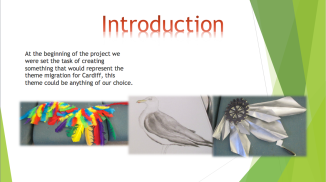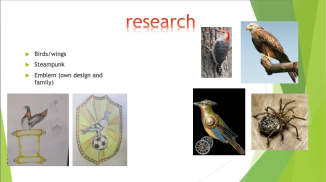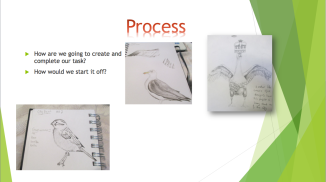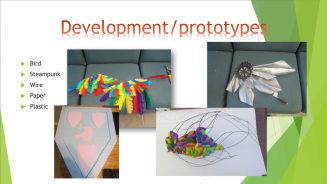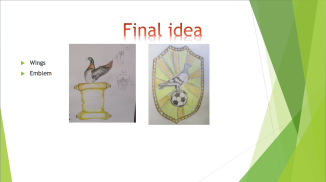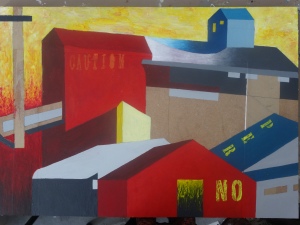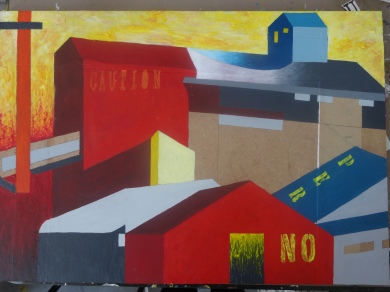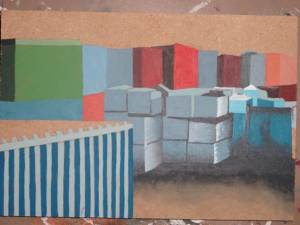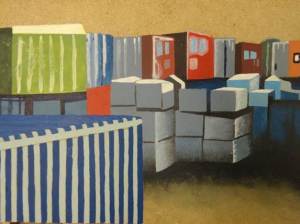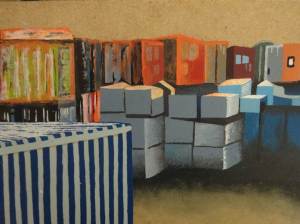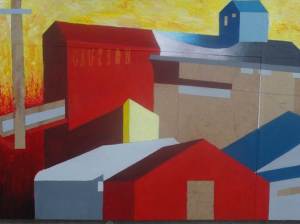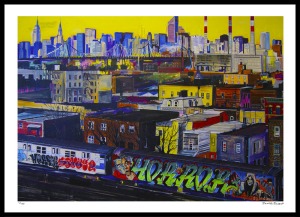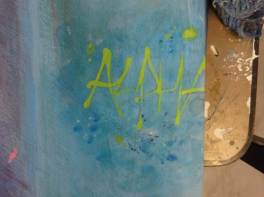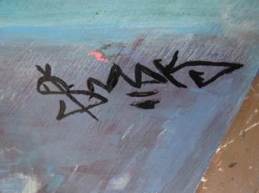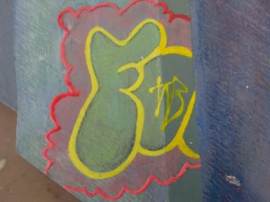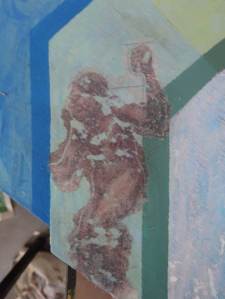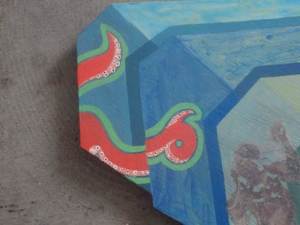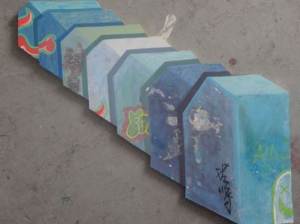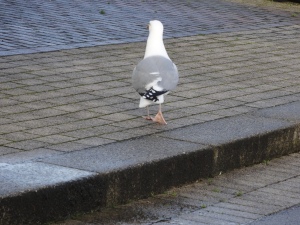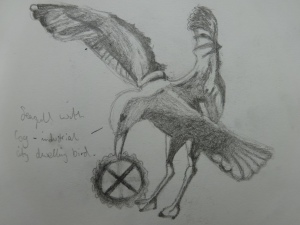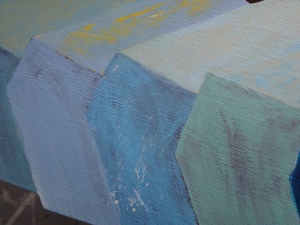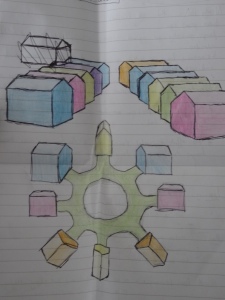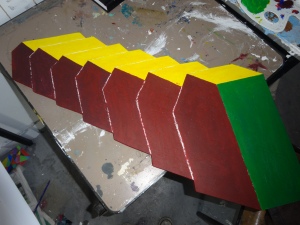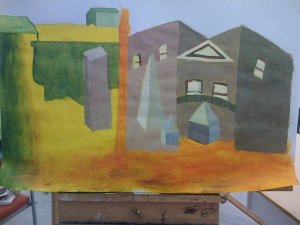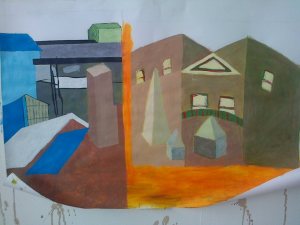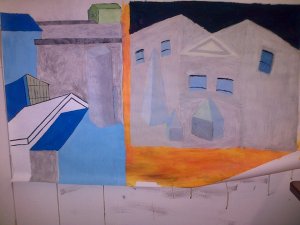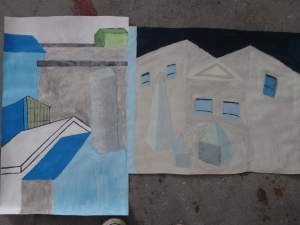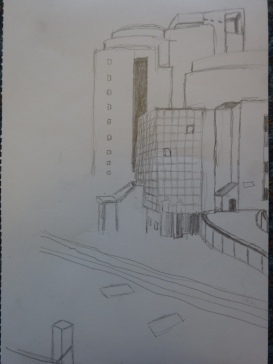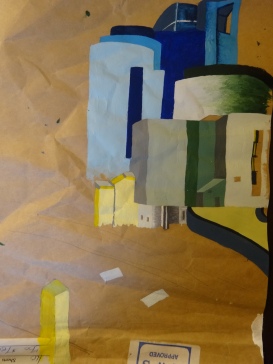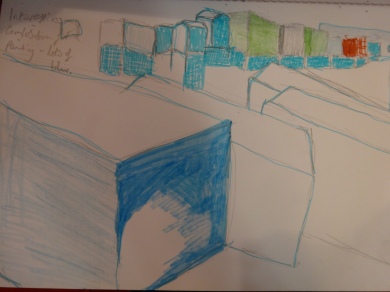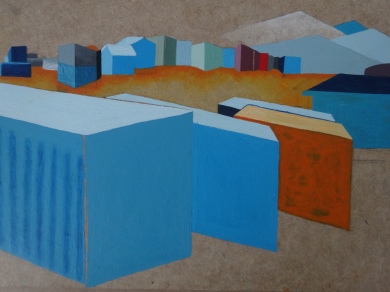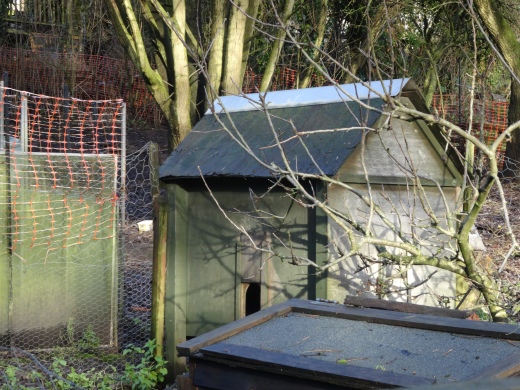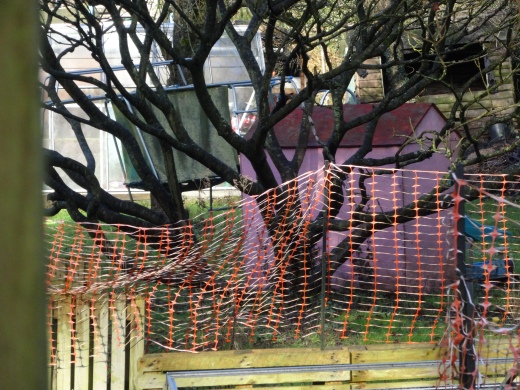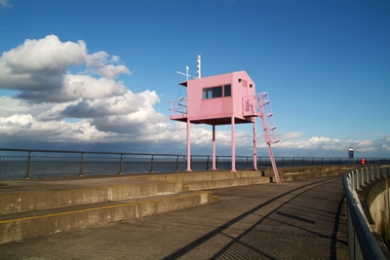My first main influence for the city project (whose work continues to inspire me throughout) is Charles Sheeler, who was an American painter and commercial photographer from the early 20th century. He was one of the founders of Modernism and Precisionism and is known as one of the master photographers of the early 20th century. He painted many industrial landscapes such as traintracks, factories and other buildings. I find his sensitivity to colour, smooth paint application and choice of viewpoint very attractive and I can see much of my own style in his work, as I tend to be quite a perfectionist and enjoy working in controlled straight lines. His precise painting style was mostly influenced by his eye for photography, you can tell by the angles he chose to paint them from. Below are some of his works.
Another thing I find fascinating about Precisionism is how one can choose the correct colour of paint to match that of a photograph, one can paint it in the correct place according to the composition of the photograph, but the finished product will not always look like a genuine photograph. The quality of paint is different to the quality of a photograph, and although it is achievable – to paint in a photo-realistic way – but Sheeler managed to paint realistically without making the painting look like one could literally step into it. This is something that I have taken on board for my own work and have kept it in mind whilst I have been painting.
